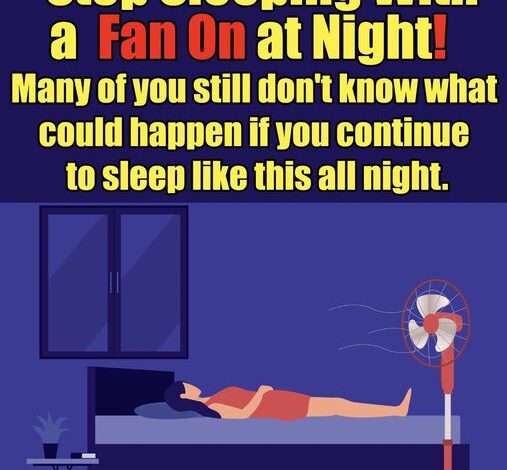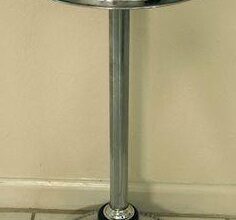“The Hidden Risks of Sleeping with a Fan On All Night”**

ADVERTISEMENT
“The Hidden Risks of Sleeping with a Fan On All Night”**
**Introduction:**
Sleeping with a fan on during hot nights is a common practice, especially in warmer climates. However, while it may seem like a harmless way to stay cool, there are several potential health risks associated with this habit that many people might not be aware of.
**Health Concerns:**
– **Dryness:** One of the primary issues with sleeping with a fan on is the potential for it to dry out your skin, eyes, and nasal passages. Prolonged exposure to moving air can lead to discomfort, irritation, and even exacerbate conditions like dry eyes or sinus issues.
– **Allergy Triggers:** Fans can circulate dust, pollen, and other allergens around the room, which can aggravate allergies or asthma symptoms. If the fan blades are not regularly cleaned, they can become a source of airborne irritants.
ADVERTISEMENT
– **Muscle Stiffness:** Direct airflow on your body can cause muscles to tense up or become stiff, especially if the fan is blowing directly on you for extended periods. This can lead to discomfort or even contribute to muscle pain.
– **Temperature Fluctuations:** While a fan can keep you cool, it can also cause your body temperature to drop too much, leading to discomfort and potentially disrupting your sleep cycle. This can make it harder to get a restful night’s sleep.
**Mitigating the Risks:**
– If you prefer to sleep with a fan on, consider using a fan with a timer so it doesn’t run all night.
– Position the fan so it’s not blowing directly on you, or use it to circulate air in the room instead.
– Make sure your fan is clean to avoid circulating dust and allergens.
**Conclusion:**
While using a fan at night can provide relief from heat, it’s important to be aware of the potential downsides. By taking a few precautions, you can enjoy the benefits of a fan without risking your health.
ADVERTISEMENT
If you’re interested in learning more about the effects of sleeping with a fan on, many health websites provide detailed insights into this common practice.




